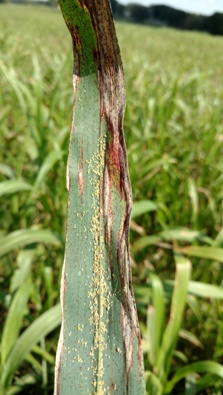Sweet-named sugarcane aphid has sour effect on crops

Insect invasions advanced more slowly when ships and wagons moved crops. Today, pests can hop aboard an airplane and infest a new area in short order. That makes it more important than ever to watch for agricultural insect pests, says Tim Schnakenberg of University of Missouri Extension.
Schnakenberg is a field specialist in agronomy in the heart of hay country. In 2016, he and other agronomists noticed significant populations of sugarcane aphids in late-season Sudan grass and other forage sorghum stands, specifically around Stone and Christian counties in southwestern Missouri.
“Aphid populations would be so intense that late-season harvests of forage sorghum fields—and in some cases Johnson grass—would be severely reduced or destroyed,” Schnakenberg says.
Infestation can be spotty and happen quickly, he says, so scout all fields. “Agricultural insect pests seem to develop when we least expect them,” he says.
New pests with the potential to damage pastures and reduce hay yield include sugarcane aphids, which moved in from southern states. Masses of the yellow aphids gather on the stems and leaves of individual plants to feed. This leads to yellowing or reddening of the leaves and reduced yield, Schnakenberg says.
Traditional insecticides do not offer effective control, he says. “So far, Transform WG and Sivanto 200SL are the only products that seem to work, though others may soon follow. Generally, these are legal for grain sorghum. However, always consult the label for special labeling in your state and if it can be used in a forage situation.”
The most practical way to deal with sugarcane aphids is to convert acreage to one of the millets that aphids do not affect, he says.



